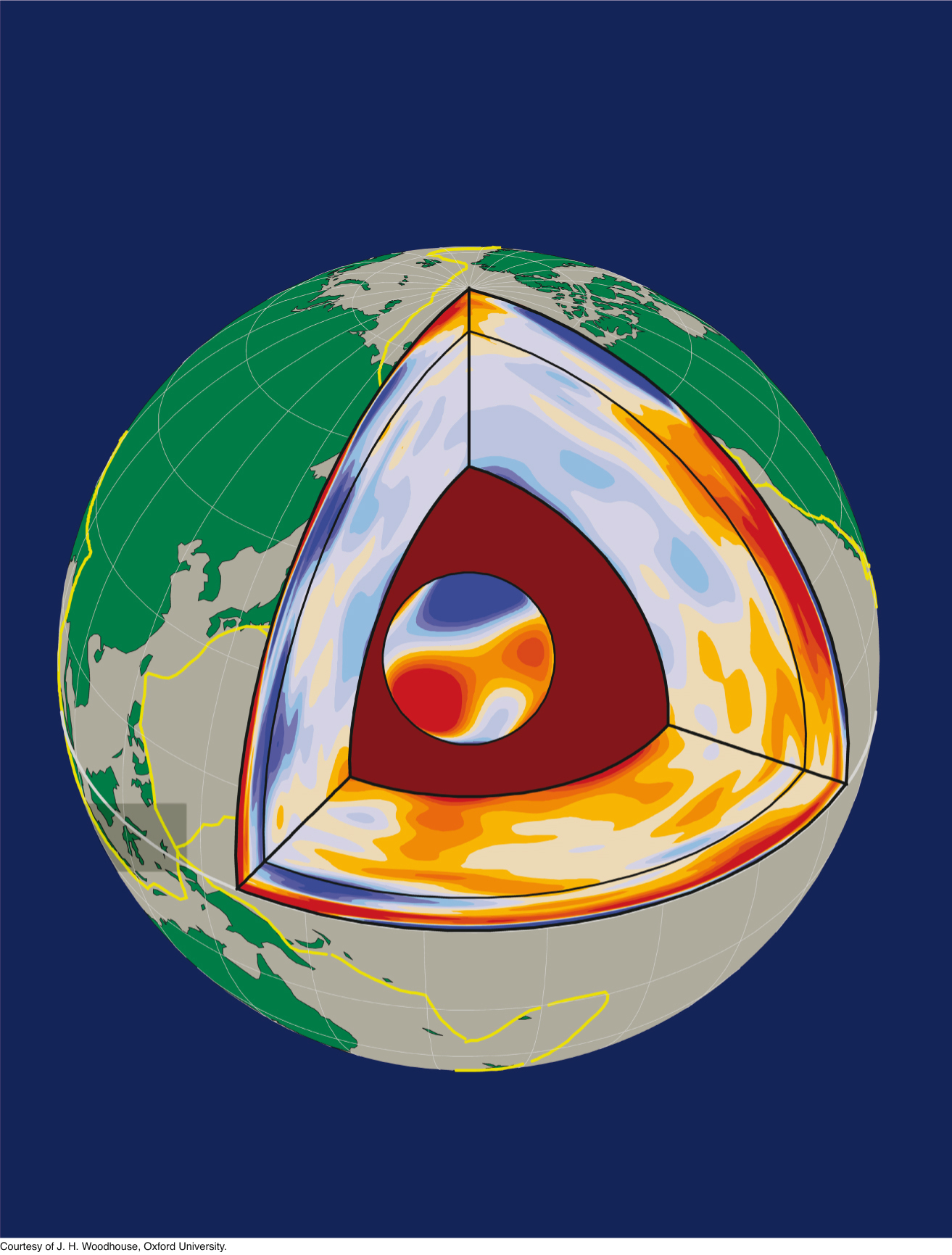382

EXPLORING EARTH’S INTERIOR
 Exploring Earth’s Interior with Seismic Waves 384
Exploring Earth’s Interior with Seismic Waves 384 Layering and Composition of Earth’s Interior 388
Layering and Composition of Earth’s Interior 388 Earth’s Internal Temperature 390
Earth’s Internal Temperature 390 Visualizing Earth’s Three-Dimensional Structure 394
Visualizing Earth’s Three-Dimensional Structure 394 Earth’s Magnetic Field and the Geodynamo 396
Earth’s Magnetic Field and the Geodynamo 396
383
HUMANS HAVE BURROWED in mines to depths as great as 4 km to extract gold and other minerals, and they have drilled down to more than 10 km in search of petroleum. But these efforts, heroic though they are, have barely scratched the surface of our massive planet. The crushing pressures and red-hot temperatures of Earth’s deeper layers make the planet’s interior inaccessible to us for the foreseeable future. Nevertheless, we can learn much about the structure and composition of Earth’s interior from our position on its surface.
Some of the best information comes from seismology. Chapter 13 described the terrible shaking and destruction that can be wrought by seismic waves. Yet this same seismic energy can be harnessed to illuminate Earth’s deepest regions, allowing us to construct three-dimensional images of geologic features in the lower crust, the rising and falling of convection currents in the mantle, and even the workings of the outer and inner core. Our understanding of Earth’s interior has been further enriched by material erupted from volcanoes, by the behavior of Earth materials under high temperatures and pressures in the laboratory, and by the information contained in Earth’s gravitational and magnetic fields.
In this chapter, we will explore Earth’s interior down to its center, nearly 6400 km beneath our feet. We will see how seismic waves have been used to image the structure of Earth’s crust, mantle, and core. We will investigate temperatures deep inside Earth and the machinery of the two great geosystems driven by its internal heat engine: the plate tectonic system, which is driven by convection in the mantle, and the geodynamo in the outer core, which generates Earth’s magnetic field.
384